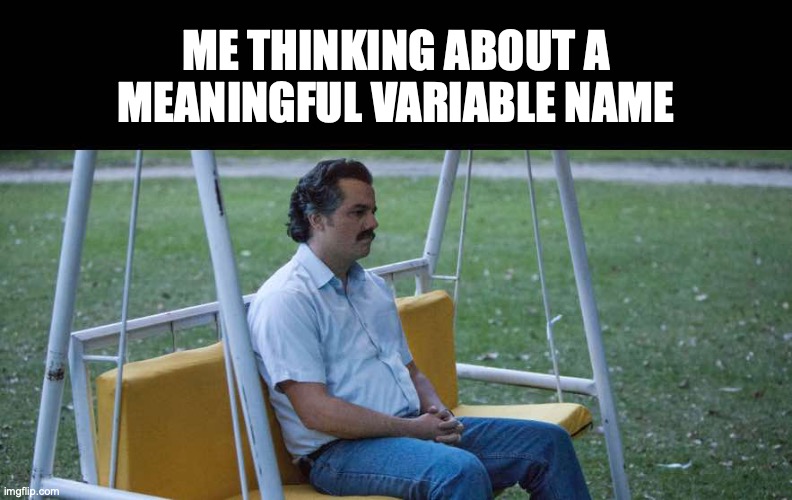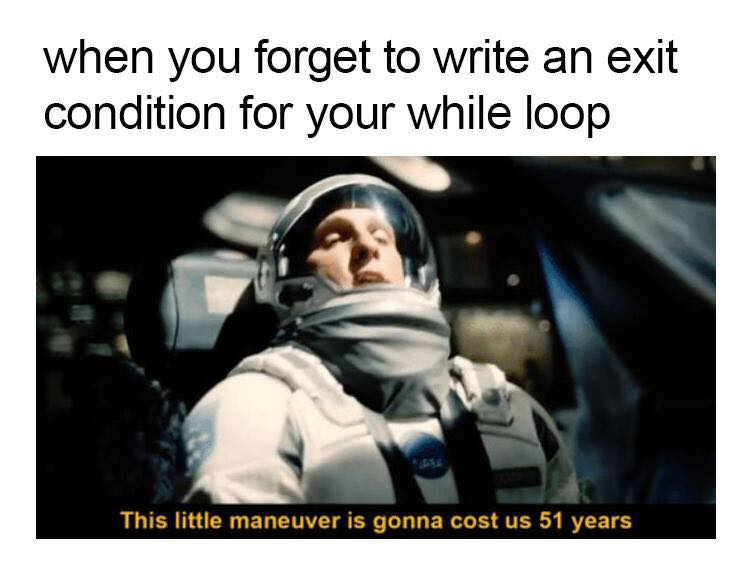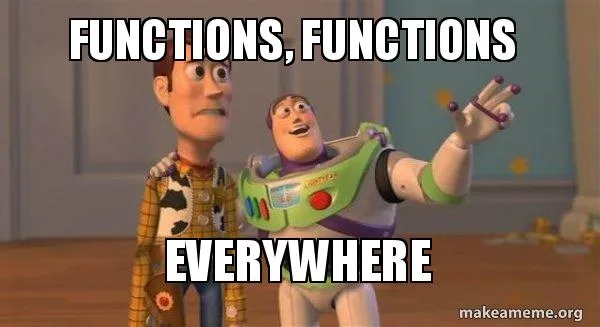Introduction to Programming
Duration. 10 weeks
Language. Language-agnostic (Python as an experimenting language)
Note
The course code and title may vary from uni to uni. This is an entry-level foundational course offered in most if not all schools to students in their freshman year. This course is a prerequisite for almost all the software development, machine learning and computer science courses.
Overview
Programming is more than writing lines of code. It’s about learning how to think like a problem-solver and breaking down complex ideas into smaller, manageable pieces. In this course, we won’t just learn and memorise syntaxes or chase after clever one-liners or cheeky hacks; we’ll focus on building a solid foundation, one that will empower you to pick up any programming language in the future. Although Python will be our guiding tool due to its simplicity and rich library support, the real goal here is to make you comfortable with the concepts of programming — the logic, structures, and the core paradigms — so that languages like C++, Java, or JavaScript feel less like mountains to climb and more like familiar landspaces.
By the end of this 10-week journey, you’ll be able to solve small, everyday problems with code by automating repetitive tasks, building simple programs, or even kickstarting a personal project you’ve always dreamed about. More importantly, you’ll have the mindset and confidence to build something from scratch, break it, fix it, and make it better!
Objectives
By the end of this course, you will:
develop a programmer’s mindset, cultivate a logical problem-solving way of thinking that extends beyond writing code.
think beyond the syntax and learn not just how to write code, but why certain approaches work better than others.
master fundamental concepts — variables, loops, conditionals, functions, and objects — core constructs you’ll find in nearly every programming language.
write clear, structured, and maintainable code by learning how to organise your thoughts into clean, efficient, and reusable code, a skill that’s super important for both personal projects and team collaborations.
understand language-agnostic principles by recognising the patterns that underline all programming languages, so you can easily transition to other languages like C++, Rust, or JavaScript down the road.
solve problems by applying programming to small, personal tasks like automating a daily chore, parsing a text file, or building a basic to-do app.
prepare yourself for future courses and industry workloads by building a strong foundation that will make advanced topics like algorithms, data structures, AI, and cloud computing far less intimidating.
learn to Google your way through any debugging session!!!
This course isn’t just about “getting the right answers.” It’s about learning how to ask or rather Google the right questions.
Structure
Below is the week-by-week breakdown of how we will proceed through our curriculum:
Developing a Programming Mindset
Since it’s the first week, we won’t dive headfirst into coding but rather cheekily rewire ourselves to think like a programmer. Before writing fancy algorithms, we need to learn how to break problems into smaller, logical steps. This week is all about developing a programming mentality.

What we’ll cover
What is programming?
Understanding programming as a problem-solving tool.
How computers “think”? Basics of how code gets executed (interpreted vs. compiled languages).
Why programming is more about logic than language?
Thinking like a machine
Decomposing problems: breaking down complex tasks into smaller steps.
What an algorithm (step-by-step solution) means?
Your first program
Writing a hello world program in multiple languages (primarily Python).
Understanding similarities and differences in semantics and syntaxes across multiple languages.
Interpreting error messages and searching for solutions on the internet.
Building blocks of code
Introduction to fundamental concepts of programming like variables, data types, etc. and their similarities with Maths.
Interactive Hands-On Lab
Compare and dissect various programming blocks for the same code across multiple programming languages.
Reflection and Homework
Reflect. Whatever you learned today about programming in any way, shape, or form.
Reflect. What you think about “step-by-step thinking” and compare how you would normally solve a problem?
Homework. Find a simple program that solved a problem — bring at least one example to share next week (it can be anything from a simple algorithm or someone’s personal project you found online).
Data Types & The Art of Naming
This week, we’ll dive deeper into one of the most essential concepts in programming — variables — and uncover the art and science behind how we store and manipulate data.
But here’s the twist: this isn’t just about learning what a variable is — it’s about truly understanding how data moves and lives within your programs. A variable isn’t just a “box” or “placeholder” for holding information — it’s a label for something deeper. We’ll explore how variables work behind the scenes, how memory allocation plays a role, and why naming things in programming is both an art form and a crucial skill for writing clean, meaningful code.

What we’ll cover
What exactly is a Variable?
Variables as labels for data stored in memory.
Mutable vs. Immutable types.
Dynamic typing in Python vs. Static typing in other languages.
Demystifying data types
Primitive data types: Integers, Floating-point numbers, Strings, and Booleans.
Composite data types: Lists, Tuples, and Dictionaries.
Data Type conversions (type casting).
The art of naming variables
Why meaningful names matter — code is read more than it’s written.
Best practices and naming conventions (Python and other languages).
Code clarity — why readability always wins.
Working with variables
Assigning and reassigning values to a variable.
Personal note
I remember the first time I wrote code, my variable names were all over the place — x, y, temp, i and j, because someone online told me that’s what “cool programmers” used. But as I started working on larger projects and collaborating with others, I realised that the clarity of my variable names wasn’t just for me — it was for future me and anyone else reading my code.
Think of it like leaving breadcrumbs for yourself. When you come back to your code weeks or months later, well-named variables are like clear road signs — they help you navigate through your own logic without getting lost.
Interactive Hands-On Lab
Design a simple “Budget Tracker” program where users input their daily expenses (items and costs), and the program then calculates the total money spent. The outcome of this lab is to learn how to use meaningful variable names and start thinking about how to store data for future use.
Reflection and Homework
Reflect. What was the most challenging part about naming your variables?
Homework. Find a small open-source project (possibly Python for simplicity) on GitHub. Look at how the developer has named their variables and the data structures (data types). Bring at least one good and one bad example to discuss in class next week.
Homework. Refactor the code from W1 by giving all the variables clearer, more descriptive and appropriate names according to your way.
Extra credit!
Find at least two unique and funny memes or developer stories about the importance of meaningful variable names. The memes should be different from what we’ve seen during the class.
Mastering Control Flows & Loops
Last week, we explored variables and data types, building a foundation for how we store and manage data. Now, it’s time to breathe life into our programs by introducing control flow — the secret sauce that allows your code to make decisions, repeat actions, and react to different situations.
At its core, control flow is what separates a simple scrappy script from a dynamic, interactive program. Without it, our code would be like a robot following a straight line, unable to turn corners or change course. But by mastering conditionals and loops, we can unlock the power to guide your program’s behaviour based on user input, data changes, or any custom logic we design.
This week, we’ll tackle if-statements, for-loops, and while-loops — but not just by learning syntax. We’ll break down the logic behind branching paths and repeated actions, encouraging you to think about how and why decisions are made in your code.
By the end of this week, you won’t just know how to write loops — you’ll know how to write clean, purposeful loops, avoiding infinite traps and crafting meaningful conditional logic that mirrors real-world thought processes.

What we’ll cover
Introduction to control flow
What is control flow, and why is it fundamental?
Visualising a flowchart in programming — how programs “think”.
Conditional statements
Basic if statements (making simple decisions).
Adding complexity with elif and else.
Nested conditionals — how far is too far?
Switch cases and Match statements.
Truthy and Falsy values in Python — the hidden meaning behind conditions.
Loops and iteration
For-loops.
Iterating over ranges (range and enumerate), strings, and lists.
While-loops and its anatomy.
Writing clear loop conditions; avoid infinite loops!
Breaking out of the loops and unwanted skipping iteration.
Added bonus: Do-While loops and GoTo.
Loop control statements
Comparing control flows across multiple languages.
Interactive Hands-On Lab
Design a “guessing number” game where the program randomly selects a number between a defined range, and the player must guess the number. The program should provide hints like “too-high” or “too-low” after each guess. Implement a limit on the number of guesses allowed.
Reflection and Homework
Reflect. What was the trickiest part of designing loops this week? Did you accidentally write an infinite loop at any point?
Homework. Find a small open-source project (possibly Python for simplicity) on GitHub. Look at how the developer has used control flow in their logic. Is there anything that you could do or propose to make it better? Bring at least one good and one bad example to discuss in class next week.
Homework. Enhance your “Budget Tracker” from W2 by adding conditional checks:
Alert the user if their daily spend exceeds a certain threshold.
Introduce a loop so that the user can keep adding expenses without restarting the program.
Don’t Repeat Yourself with Functions
By now, we’ve laid some serious groundwork. We’ve explored how data is stored (Week 2) and how programs make decisions and repeat tasks (Week 3). But what happens when our code starts to get… messy? This is where functions come to the rescue. Functions are the ultimate way to organise, reuse, and structure our code.
Functions are more than just “reusable chunks of code.” They’re a way to name a process. They let us take a concept, like calculating tax on a bill or validating a password, and give it a clear, memorable name in our program. Instead of cluttering our code with repeated logic, we craft a neat, purposeful function — and then use it whenever we need.
But this week isn’t just about learning how to write a def my_function():.
It’s about understanding the “why”. Why functions are essential for clean
code, why they make our programs more flexible, and why learning to write
small, focused, and meaningful functions will set us apart as a programmer.
By the end of this week, we’ll not only be able to write basic functions but also grasp parameters, return values, and scope — the hidden rules that control what variables live where in your program.

What we’ll cover
Introduction to functions
What is function, and why do we need them?
Real-life analogies.
The difference between built-in and user-defined functions.
Defining and calling functions
Basic function syntax in Python and other languages.
Defining a function.
Calling functions to execute our code.
Function parameters and arguments
Positional arguments, the standard way of passing information.
Keyword arguments, when the order doesn’t matter.
Default arguments.
Subtle difference between parameters (placeholders) and arguments (actual values).
Return values
The return statement, getting data back from the function.
Functions without a return value.
Why
Noneis still a thing?Returning multiple values.
Variable scope
Local vs. Global variables.
Why global variables are often a bad idea but necessary in some cases?
Interactive Hands-On Lab
Design a “tip calculator” function which takes a bill amount and tip percentage, then returns the total amount to be paid. Next, extend the function by adding an optional arguments for splitting the bill, so you can calculate what each person pays if you’re dining out with friends. Finally, extend the function to handle different currencies (passed as a parameter).
Write a function that takes a list of numbers and returns the largest, smallest, and average values. Run the same experiment using the built-in functions.
Reflection and Homework
Reflect. Think of a real-world process you personal repeat quite often. For instance, something simple as making a cuppa tea, packing bag for school, etc. Could you break it into “functions” — small, reusable steps?
Homework. Enhance your “Budget Tracker” from W3 by adding functions:
A
calculate_total()function that sums all the expenses.A
display_summary()function that formats and prints a nice report of daily or weekly spendings.